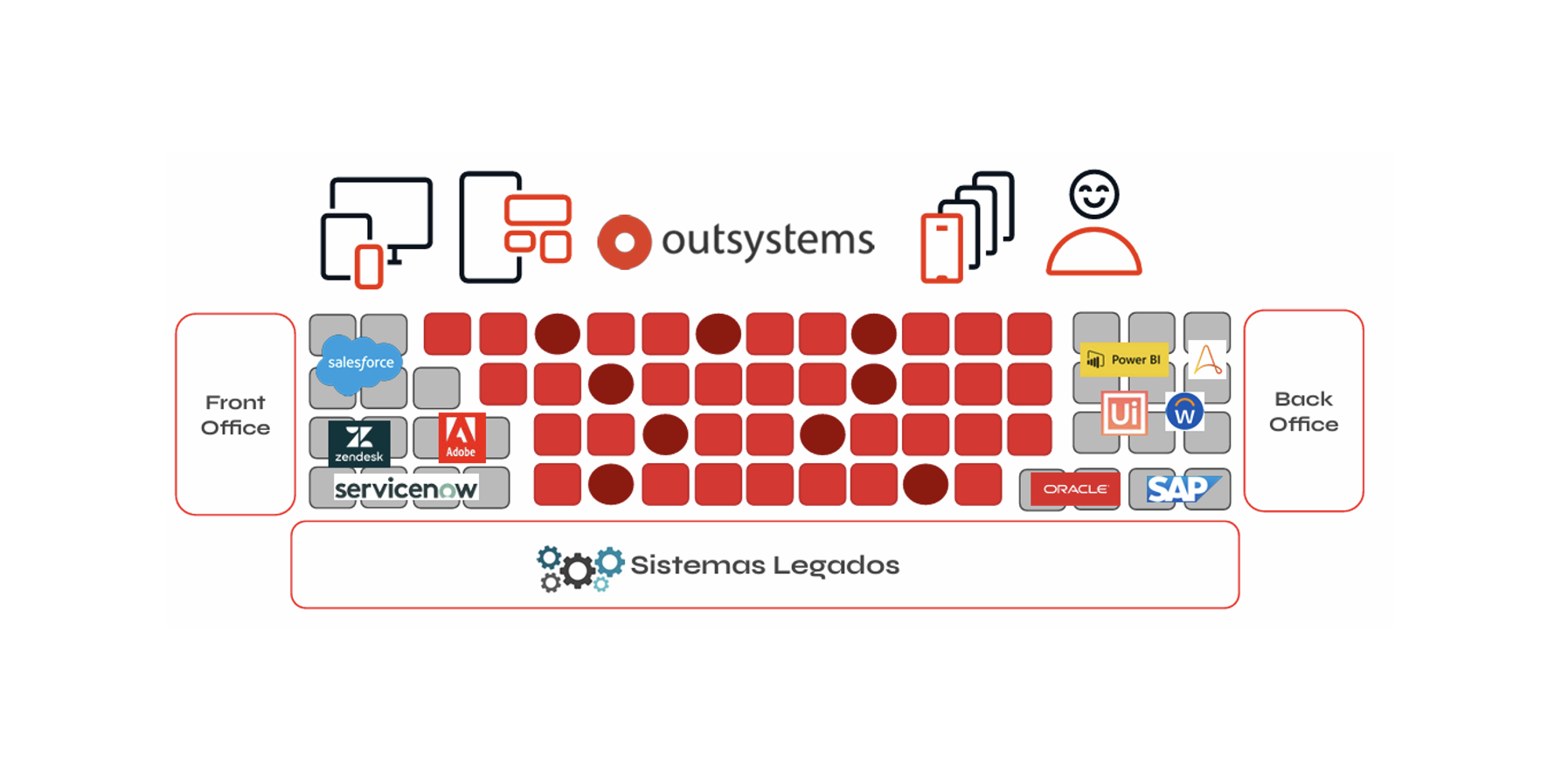The best of two worlds
Not so long ago, the music industry only offered us the option of buying an artist's entire album, even if we had little adherence to the full repertoire, and only wanted to hear one or two songs from this selection, generating frustration, wasting money and generating little innovation. With the emergence of single-song sales platforms, we suddenly had the freedom to make our own musical selections, putting our creativity to work and combining our favorite songs into various playlists, each suited to the right occasion. Now it's time for this same transformation to reach the systems and applications development "industry".
A company's journey is surrounded by challenges, often forcing them to constantly reinvent themselves and develop new solutions for the success of their business. In an increasingly digital world, it's only natural that technology is an important ally in every company's innovation process, the adoption of which always comes with an important decision: buy ready-made or make it in-house.
Until recently, companies were very focused on using technology to increase their operational efficiency and, to this end, they invested a lot of time and money in numerous process digitalization projects. With an eye on the promised speed of implementation, most of them decided to buy ready-made solutions and adapt their business processes to the packages of systems and applications available on the market. A move that was only relatively successful.
No matter how comprehensive these standardized solutions try to be, the reality is that no two companies are the same and, for this reason, it has always been necessary to buy many additional customization and parameterization services, increasing the costs of acquiring, maintaining and evolving these systems and applications, and raising questions about the low adoption of the processes already embedded in these solutions and the intellectual property of the improvements implemented.
To escape these questions, many companies have opted to go the other way, and have hired software factories to develop tailor-made systems and applications that surgically address their business processes. Costs were reduced, but speed and, above all, creativity were lost. With everything being done exclusively, only what is requested is done, meaning that the opportunity to adopt innovations introduced to other companies in the ecosystem, an interesting feature of standardized solutions, is lost.
Fortunately, technology has moved on and today we can find the best of both worlds in OutSystems' microservices platform. It's a low-code development platform, turbocharged with AI, that allows companies to quickly develop their services from pre-prepared components that are freely available in a repository fed by a huge ecosystem of developers spread around the world.
The services are then combined to create the systems and applications that the business requires. So an integration with a legacy system, a business risk calculation, the application of an SLA template, or even the use of a voice transcription model turbocharged with AI are developed only once, from components created by this great mesh of connected minds, and used wherever they are needed.
Systems and applications are developed at lower cost, in a faster and more creative way, and free of intellectual property barriers. With this architecture, it is much easier to make improvements and carry out maintenance, helping companies to spend more money on innovation and less on operations. What's more, the systems and applications developed only use the resources they need, and when they need them - a much more rational solution from the point of view of energy consumption, and extremely aligned with companies' sustainability initiatives.
In the near future, we will see standardized solutions being used only in very specific cases, where there is a very strong adherence to a particular use. All other needs will be met by a single technological platform, made up of a huge library of services, combined in a rational way to create systems and applications that will be accessed by users licensed for the platform itself, and not for each individual system or application, representing huge savings in software and services licensing.
Although there is still a dominance in the use of standardized solutions, mainly in legacy systems and applications, it is a fact that this scenario is set to change a lot, and in a short space of time. Companies today are faced with more complex challenges than a few years ago, mainly linked to the continuous production of innovation and the provision of personalized experiences for their customers, and it's hard to imagine that standardized solutions can help them continue to thrive.
In the music industry, if you're a big fan of a specific artist (large adherence), you can continue to buy the whole album (standardized solution), but for everyone else, the freedom to choose their own songs (services), combining them in their own playlist (systems and applications) to meet specific and particular needs, and rationalizing the use of resources (money, time, energy) in this process is already a reality. It's the union between buying ready-made and making it at home.
Similarly, OutSystems' microservices platform offers the union of these two worlds for the systems and applications development "industry", and the best thing is that it is already available today.
